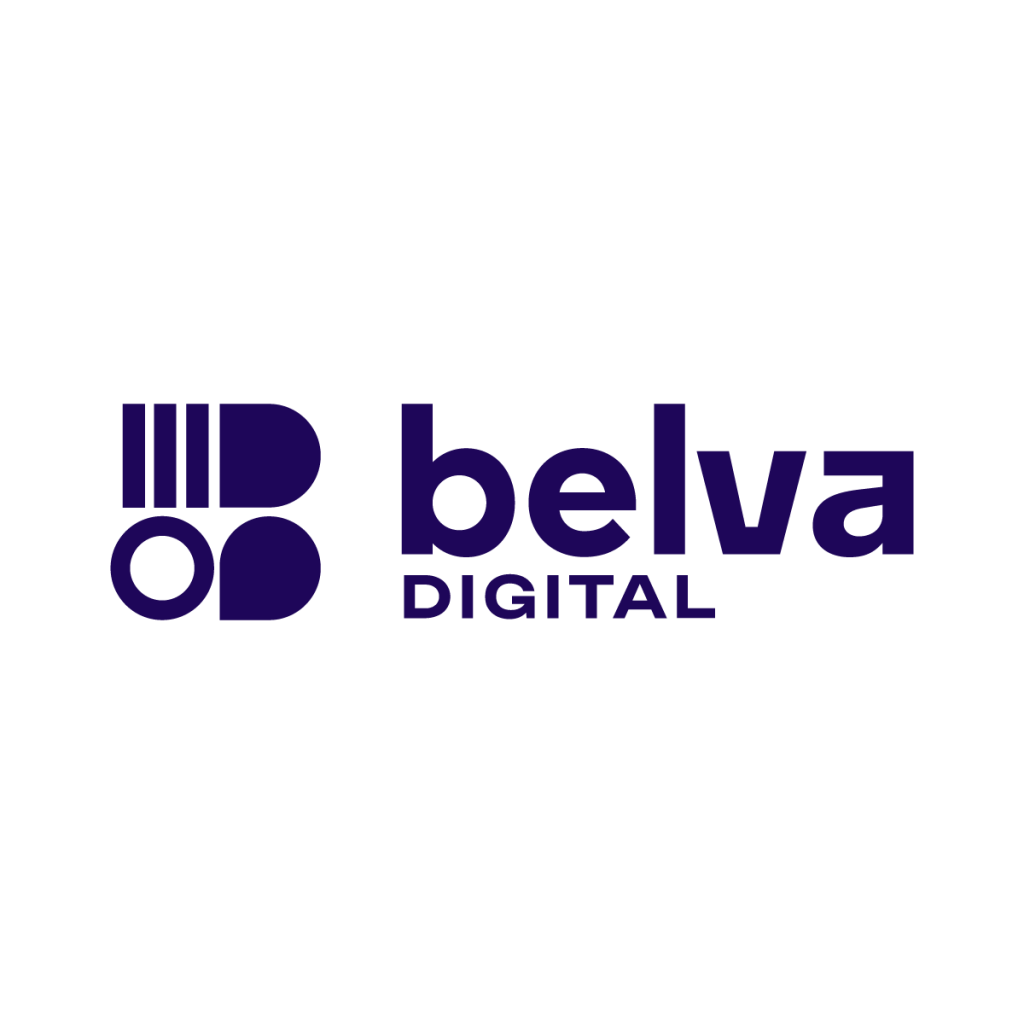As the new year begins to settle, it’s right to start aligning your marketing efforts with the current digital marketing trends that might. Why?
There are a lot of new, continuing, and exciting activities in the digital world. It’s evolving faster than the virus that’s put the world on a slowdown.
We can’t predict the future, but trends can help show what the future holds.
So, to help you navigate 2022, we’ve put up this collection of key digital marketing trends that we expect.
Recap: Top Digital Marketing Trends in 2021
In 2021, TikTok overtook all other platforms to become the leading social media channel among Gen Z users. It even overtook Google as the most popular site as per Investis Digital. Internet popularity finally surpassed TV in Kenya as per this GeoPoll report. Facebook recently changed its name to Meta in line with its ambition to embrace a 3D virtual world – the Metaverse. Also, Google announced its intention to phase out third-party cookies by 2023, which left digital marketers and advertisers in a two-year rush to navigate new channels for reaching their target audience.
So, a lot has been going on, and more is expected to occur in the digital world.
Top digital marketing trends for 2022
The digital marketing trends that will shape the digital landscape in 2022 are:
1. Conversational marketing for immersive customer experience
The conversational marketing approach is customer-centric, dialogue-driven marketing. It drives customer engagement and helps improve customer experience.
Conversation marketing embodies two approaches:
- Storytelling
- Response.
To stand out in 2022 and beyond, brands and digital marketers should do two things:
Tell real, more intentional stories about their value and purpose, focusing on the customer.
Respond to customers as quickly as possible through tools such as live chat and chatbots
Here are a few data to support this:
- Users expect an immediate response. 71% of customers expect prompt, real-time communication from businesses
- Live conversations increase conversion. Leads from chatbots are 4 to 5 times more likely to convert into sales compared to other lead sources.
- Live chat support boosts repeat purchases. 52% of consumers will likely make a repeat purchase if they get support via live chat
- Marketing bots can answer 80% of customers’ routine questions and reduce customer service costs by 30%
- 40% of millennials interact with chatbots daily, and this number is expected to increase
- Chatbots help increase loyalty in customers by 79%
- Over 80% of businesses will have some form of messaging automation in 2022
The increased interest in conversational marketing comes down to the increased use of technology (chatbots), social media, and the shift in consumer behaviors. We offer a unified communication platform called AXIS that can support businesses with conversational marketing.
2. Short, DIY Videos are set to control online attention
Today, videos have become the most popular choice for content consumption with a third of all online activity being spent watching videos. This is why video marketing is set to be the cornerstone of marketing campaigns.
The sharp surge of short, online videos can be pointed to TikTok’s short DIY (do it yourself) model and its influence.
Video marketing has become so popular, and wherever you look, you can see the same pattern:
- Adding videos to posts boosts engagement. Globally, videos offered 128% more click-throughs than ads without videos.
- Videos generate 83% more leads, give 66% more qualified leads, and have 157% more organic traffic in SERPs than written copy.
- On average, websites that use videos get 4.8% more conversion than 2.9% for websites that don’t use videos.
- 84% of customers believe videos persuaded them to purchase a product or service.
Why’s video marketing the next big thing: 5 great successful product video ad tips you need
- There has been a 96% rise in online video consumption among consumers since 2020.
- In 2021, 3 Billion internet users (of any age) watched digital videos (streaming or downloaded) through any device at least once every month.
- Video views are projected to reach about 3.5 billion by the year 2023.
- Across Africa and the Middle East, 79% of internet users watch videos
- South Africa’s online video audience first surpassed the T.V. audience in 2020, increased it in 2021 to reach 98% of internet users streaming video from a digital source.
Here are how select African counties watch videos online:
South Africa
- 36.54 million active internet users
- 22 million active social media users.
- 98% watching online videos
- 47% watch vlogs
Nigeria
- 104.4 million internet users
- 33.00 million were active social media users
- 89.5% watch online videos compared to 65% in 2018
- 65% watch vlogs
Kenya
- 21.75 million active internet users
- 11.00 million were active social media users.
- 97% watch online videos, spending 6 hours a day online on average
- 51.9% watch vlogs
These trends show how video is increasing in importance for digital marketers.
3. Web 3.0
The Web industry might explode in 2022. So, when talking about the Metaverse, we cannot forget Web 3.0 or simply Web3.
People are making the case that the next generation of the web or Web 3.0 will be based on blockchain and decentralization.
Put simply, by Tim O’Reilly, the author who defined Web 2.0 in 2004, Web 3.0 is simply a “zero-trust, more truth” decentralized interaction system. The first stage, Web 1.0, was about getting on the internet and accessing information. Web 2.0 brought with it interaction amongst people via the internet and now the third phase of Web (Web 3.0) will be a more decentralized and open version of Web 2.0.
Used to describe the next phase of the Internet, Web3 features decentralized mobile apps and internet services rebuilt on blockchain technology.
The tenets and first products of web3 include emerging technologies such as:
- Blockchain and Cryptocurrencies
- Digital assets like NFTs
- Virtual reality
But more is to come. In 2022 Web 3.0 might explode, and these technologies might change many things.
The potential Web3 benefits include:
- Inherent decentralization allows anyone to participate without monetization of their personal data.
- Anyone on the network can use the service (permission isn’t required).
- Payments are through tokens, such as NFTs and cryptocurrencies.
A practical example of Web3 is Twitter. While currently, Twitter can censor any tweet or account (remember Donald Trump?), in Web3 tweets, and accounts would be uncensorable.
What does this mean for digital marketing?
Web3 will influence marketing to rely heavily on big data with a focus on AI, owning and benefiting from content, fair use, and pay-per-use models.
This will encourage more content online while using AI to distinguish between fraudulent and accurate results, resulting in products or services comparable to social media but not necessarily controlled by big-tech but by individuals.
Source: GeeksforGeeks
4. Metaverse: NFTs and Cryptocurrency is where business is directed
Mark Zuckerberg might have shot the term “Metaverse” into the mainstream when Facebook changed its name to Meta, but it isn’t a new idea.
The notion of an immersive digital realm separate from the physical world is traceable back to the 1990s science fiction and 1980s video games.
The Metaverse is a challenge to explain because, in reality, it doesn’t exist. It’s a dream of an online infrastructure of the “future internet” with a 3D real-time world.
It’s speculated to affect the continuity of history, identity, objects, payments, and entitlements. All interactions will be virtual in spaces, not in physical spaces like you.
Speculations are that the Metaverse might be the next generation of social media and might be a fancier successor of the Internet. But as more information comes to light, marketers need to position themselves for what’s to come.
What we already know is social platforms are gearing towards Metaverse:
- Blockchain, Non-fungible tokens (NFTs), and cryptocurrencies might form the financial architecture for the Metaverse.
- People are already trading virtual goods (NFTs) using cryptocurrencies.
- Facebook has changed its name to Meta in preparation for the transition and is now promoting NFTs display options and avatars.
- Twitter has taken steps to integrate cryptocurrency payments into its platform and you can now append your NFT as a Twitter avatar
- There’s a rising trend for display tools and platforms that showcase in-app NFT purchases.
What does this mean for marketers?
Now is the time for digital marketers to consider how they can fit in the new Internet – or universe. We expect to see more companies adopting the Metaverse as Gen Z and Gen Alpha drive the adoption of this trend.
Marketers can start considering how to create virtual experiences to engage with consumers beyond the physical spaces and limitations.
- The emergence of Gen Z and influencer marketing
While Millennials control tech growth, Generation Z is moving into the consumer spotlight at speed, and they already have influence.
Also known as digital natives, Gen Z makes up 32% of the global population and is projected to be 34% of the workforce by 2030. In 2022, 74 million people in the U.S. will be within the Gen Z group and they’re already 60% of the population in Africa.
In 2019, about 46% of the South African population belonged to Generation Z. Nigeria had a Gen Z population of 19%, Kenya had 20.3%, Uganda 20.5%, and Ethiopia 21.8%.
With their numbers, Gen Z influences consumption and tech uptake. They already control 40% of consumption in the world with a purchasing power of $144 Billion and their set of preferences influence markets and consumption patterns. In fact, 93% of parents already believe their Gen Z children influence their household purchases.
They’re more global, pragmatic, and cautious yet more individualistic. Since they always have the Internet, they’re looking for deals first and not brands but will pay extra for sustainable products.
This is why Gen Zs and influencer marketing are a great match.
They’re onboard with influencers, and almost 2 out of 3 Zders report following an influencer. 50% of Gen Zs say that they trust influencers’ recommendations. In fact, gen Zs don’t just like influencers but want to be them. They endorse paid sponsorships, which makes influencer marketing the way to reach and convert them.
By numbers, influencer marketing reached $13.8 billion in 2021, and 2022 already looks set to break that record.
Where do influencers find Gen Z?
- 85% of all Generation Zs learn about products – new and old – from social media.
- TikTok is where all the Gen Z trends begin, and their preference is video entertainment. Gen Z makes up 60% of TikTok users. TikTok is reportedly paying influencers $500 to join the platform, and it seems to be working well because the platform is growing like crazy.
- Instagram provides the opportunity for memes, stories, finstas, and reels (short TikTok-like Videos). About 71% of 18- to 29-year-olds use Instagram, and the numbers are growing.
- Twitch. This is a streaming platform for e-gaming, similar to cable T.V. for Gen Z men (94%), where they can stream as they pay. Twitch has international competitions, charity partnerships, brand sponsorships, and so much more. In 2021, more people watched gaming than Netflix, HBO, Hulu, and ESPN combined!
- Spotify. This is the source for new music, discussions, and popular podcasts. While Twitch is Gen Z’s cable T.V., Spotify is their go-to radio. Spotify’s audience doubled in 2019 where Gen Zs are ¼ of the over 200 Million users.
Now, many B2B brands continue to embrace the Gen Zs population and influencers. Marketers should look for opportunities to partner with influencers. Gen Z is set to be an influencer-friendly generation. The combination of tech culture and economic precarity has made Gen Z industrious, creative, and people who crave authenticity and wish to be influencers.
5. Employees as your influencers
In 2022, as before, ensure your employees are in the know, not necessarily those in the marketing team but the entire workforce. Why?
Brands are projected to spend in excess of $15 billion on influencer marketing in 2022, yet they ignore the best brand ambassadors money can’t buy: their employees.
Employees sharing content (behind-the-scenes) on their personal social media accounts helps push brands.
Remember, your employees are experts in their fields, and they could have social media numbers. You can turn these figures into a powerful voice.
Why should you lean into employee influencers? Because they are often nano- and micro-influencers seen as more authentic with higher engagement rates than celebrity influencers who have lesser credibility and engagement rates.
Employees interact with and listen to their fans in communities that appear more like friendships than fanships. You can ensure that your employee will remain relevant and steadfast in promoting your brand.
There is power in employee influencers:
- On average, an employee has a network that is 10x larger than their company’s follower base
- Content (On LinkedIn) gets 2x higher engagement when shared by employees
- 53% of consumers, globals, believe employees are credible sources of learning about companies
- 70% of buyers trust employee recommendation
To encourage your expert employees as influencers, give them extra resources and support for content creation and enable them to become established thought leaders.
6. Data: More Clarity. Improved Performance
Data changed marketing for good, and in 2022 data will continue to and even at a larger scale and that brings into the picture – Customer Data Platforms (CDPs).
Customer Data Platforms are software that organizes and aggregates customer data across a variety of touchpoints. Marketers can use CDPs to collect and structure specific, real-time data into individual and centralized customer profiles and target marketing.
In 2022, more marketers should use CDPs to unify customer profiles combining profile, behavioral and transactional data while incorporating anonymous, first-party, and third-party data variables to achieve highly personalized customer experiences and more conversions.
7. Marketing in Cookie-less world: Privacy set to challenge marketing
A “New Era of Digital Marketing” championed by data privacy and the need for transparent data collection.
Privacy is an increasingly critical aspect to consumers, and data protection regulations are growing stricter. Marketers will need to find a way of working with content-driven data to respect consumer privacy.
A lot of things are changing in the digital world with privacy trends:
- Safari and Firefox browsers already blocked third-party cookies by default.
- Google announced phasing out third-party cookies in Chrome by 2023.
- Beginning iOS 14, Apple requires voluntary opt-in for users to allow Apps and companies to track their data with the Identification for Advertisers (IDFA).
As if that is not enough:
- 42.7% of all internet users around the globe use ad blockers
- Many products are being built with privacy and security in mind to “rescue” users from data-harvesting, such as DuckDuckGo, Blockchain smartphones, TOR browser, Brave, Signal, and ProtonMail, etc.
Internet users are about to gain more privacy and security on their data. But marketers will have fewer data points about prospects and maybe fewer advertising options.
There are big questions, uncertainty, and headaches among marketers on approaching ad attribution and marketing without third-party Cookies.
Dubbed the “Cookie-pocalypse,” cookie-less marketing may – disrupt the fundamentals of the digital ecosystem for marketers.
Recommendation: Marketers should assess the impact or marketing in a cookieless world and depict Google’s vision:
While Chrome is the world’s leading browser, Google appears to be acing Google Search. And, with the cookie-less move, Google is projecting a vision of ‘Simplicity in privacy and Advertising’ through the following principles:
- New ways to track web ads and privacy other than cookies
- Track and target audiences without them sharing personal information
- Privacy sandbox (P.S.) to allow sites to gather limited personal info.
- Anonymized groups built on principal vs. targeted individuals are called Federated Learning Cohorts.
- Brand ads won’t be able to carry out a targeted campaign
- Improve the use of CDPs to aggregate and make the most of first-party data, reliance on communities built on social media (Facebook, Instagram, Twitter, LinkedIn, etc.), and keyword-based targeting on search (search intent) among others.
In essence, cookie-less marketing will mean consent-based data collection and more data transparency. This might affect targeted marketing and personalization. Marketers must find a way to use first-party data in their actions and create new customer tracking/engagement models, including how to recognize anonymous prospects.
8. Account-Based Marketing for B2B brands
Account-based Marketing (ABM) became one of the biggest B2B marketing trends in 2021. The trend is set to continue in 2022 because of the ability to reach and engage B2B decision-makers.
When marketers and salespeople join hands, the company realizes a higher ROI (return on investment). Why?
B2B markets are turning to ABM because of its greater emphasis on defining the company’s Ideal Customer Profile (ICP). This helps in defining prospects (qualified leads) that are most likely to buy. This is better than inbound marketing which targets the general audience.
This is why:
- Over ½ of B2B marketers in 2021 report using ABM strategies.
- 87% of B2B marketers believe ABM initiatives deliver better RIO than other marketing activities.
- 67% of brands leverage at least one model of account-based marketing.
- 43% of businesses implementing ABM are in the early stages.
- 1 in 5 leads (20%) targeted through ABM becomes qualified for sales
- 82% of B2B marketers believe ABM greatly improves the alignment of sales and marketing alignment teams
- ABM reduce sales time on unproductive prospecting by 50%
Many marketers, professionals, C-suite executives, and companies adopt account-based marketing because it offers personalization at scale. It will be interesting to see how ABM demand and techniques evolve in 2022 and beyond. But, for digital marketers, now is the time to adopt ABM, if you are yet to catch on
9. Conversion Rate Optimization (CRO)
Last but not least is Conversion Rate Optimization (CRO). CRO is important because it helps to lower your cost of customer acquisition and grow customer lifetime value. Basically, more buck from your dollars, which is the best ROI in town.
How can marketers boost their CRO? Here are some tactics we highly recommend:
- Active personalization. Consumers now expect a fluid and personalized user experience in all of their online activities. Achieve personalization by looking at your first-party data (demographic, behavioural, purchase and so forth) and building scalable models.
- Customer-centric marketing. The downfall of third-party cookies and endless remarketing of visitors means that marketers won’t be able to rely on cookies to re-engage their customers. Thus, marketers now need to dig into reliable first-party (owned data) and second-party data (owned by platforms such as Google and Facebook). To be successful, marketers need to learn how to own customer data, while maintaining customer relationships through customers’ own volition.
- Increased website/app load speeds. Simply but still a big concern. Conversion is about precision and speed. If your product is precise and your website has lightning speed, the customer will get a good user experience and eventually convert. Marketers are adopting high-speed website trends through headless CMS and commerce systems.
- Implement marketing automation. There are a number of repetitive actions that can be automated to allow marketers to focus on strategic matters. For instance, if you are running an e-commerce platform, users should receive an automated email, SMS with a promo code whenever they abandon cart. This is just one of many instances that can be automated to re-engage users and improve conversions.
- Better products. Ultimately, marketing doesn’t fix bad products. If you’ve a product/service with good market-fit then marketing can generate demand for it and CRO can help optimize to lower your Customer Acquisition Costs (CAC).
There are many best CRO tactics out there, ultimately, you need to find out what your customers respond to, and what drives results for your business. If you don’t have a CRO strategy, probably that a good place to start.
Conclusion: Are you ready for digital marketing 2022?
Digital marketing is an always-moving landscape. Stay fluid and agile as you prepare your 2022 marketing goals and campaigns. From the Metaverse and NFTs to A.I., data privacy, ABM marketing, monitor these top tech trends and utilize them to drive the maximum ROI.









